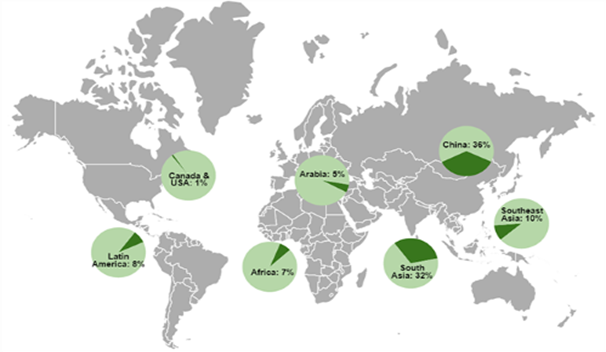[et_pb_section fb_built=”1″ _builder_version=”4.19.2″ _module_preset=”default” global_colors_info=”{}” theme_builder_area=”post_content”][/et_pb_section][et_pb_section fb_built=”1″ _builder_version=”4.16″ custom_margin=”0px||0px||false|false” custom_padding=”0px||0px||false|false” global_colors_info=”{}” theme_builder_area=”post_content”][et_pb_row column_structure=”3_4,1_4″ use_custom_gutter=”on” _builder_version=”4.16″ _module_preset=”default” width=”100%” custom_margin=”0px||||false|false” custom_padding=”0px||0px||false|false” border_width_bottom=”1px” border_color_bottom=”#a6c942″ global_colors_info=”{}” theme_builder_area=”post_content”][et_pb_column type=”3_4″ _builder_version=”4.16″ _module_preset=”default” global_colors_info=”{}” theme_builder_area=”post_content”][et_pb_post_title meta=”off” featured_image=”off” _builder_version=”4.16″ _module_preset=”default” title_font=”||||||||” custom_margin=”||3px|||” border_color_bottom=”#a6c942″ global_colors_info=”{}” theme_builder_area=”post_content”][/et_pb_post_title][/et_pb_column][et_pb_column type=”1_4″ _builder_version=”4.16″ _module_preset=”default” global_colors_info=”{}” theme_builder_area=”post_content”][et_pb_image src=”https://edmontonsocialplanning.ca/wp-content/uploads/2020/12/COLOUR-BLOCKS_spaced-300×51.png” title_text=”COLOUR BLOCKS_spaced” align=”center” _builder_version=”4.7.7″ _module_preset=”default” max_width=”100%” max_height=”75px” custom_margin=”0px|0px|0px|0px|false|false” custom_padding=”10px|0px|20px|0px|false|false” global_module=”96648″ global_colors_info=”{}” theme_builder_area=”post_content”][/et_pb_image][/et_pb_column][/et_pb_row][et_pb_row column_structure=”3_4,1_4″ use_custom_gutter=”on” make_equal=”on” _builder_version=”4.16″ background_size=”initial” background_position=”top_left” background_repeat=”repeat” width=”100%” custom_margin=”0px|auto|0px|auto|false|false” custom_padding=”30px|0px|0px|0px|false|false” global_colors_info=”{}” theme_builder_area=”post_content”][et_pb_column type=”3_4″ _builder_version=”4.16″ custom_padding=”0px|0px|0px|0px|false|false” global_colors_info=”{}” custom_padding__hover=”|||” theme_builder_area=”post_content”][et_pb_text _builder_version=”4.16″ _dynamic_attributes=”content” _module_preset=”default” text_font=”|600|||||||” text_text_color=”#2b303a” custom_padding=”||32px|||” global_colors_info=”{}” theme_builder_area=”post_content”]@ET-DC@eyJkeW5hbWljIjp0cnVlLCJjb250ZW50IjoicG9zdF9kYXRlIiwic2V0dGluZ3MiOnsiYmVmb3JlIjoiIiwiYWZ0ZXIiOiIiLCJkYXRlX2Zvcm1hdCI6ImRlZmF1bHQiLCJjdXN0b21fZGF0ZV9mb3JtYXQiOiIifX0=@[/et_pb_text][et_pb_text _builder_version=”4.27.0″ text_text_color=”#2b303a” text_line_height=”1.6em” header_2_font=”||||||||” header_2_text_color=”#008ac1″ header_2_font_size=”24px” background_size=”initial” background_position=”top_left” background_repeat=”repeat” text_orientation=”justified” width=”100%” module_alignment=”left” custom_margin=”0px|0px|0px|0px|false|false” custom_padding=”25px||||false|false” hover_enabled=”0″ locked=”off” global_colors_info=”{}” theme_builder_area=”post_content” sticky_enabled=”0″]
Written by Abhinav Sharma, ESPC volunteer
Introduction
National Non-Profit Day is celebrated on August 17. This day is designated to honour the tremendous work that non-profit organizations do to improve lives locally and globally (National Day Calendar, 2024). The impact of non-profits who aid the most vulnerable cannot be overemphasized. A not-for-profit organization is an association or corporation committed to operating “exclusively for social welfare, civic improvement, pleasure, recreation, or any other purpose except profit” (National Day Calendar, 2024). Some examples of non-profits include, churches or church associations, schools, volunteer services organizations, medical providers, research institutes, etc. (Canadian Non-Profit Incorporation, 2024).
Profile and Impact
Non-profits touch on issues in the social, health, community development and advocacy sector which are known to have gaps in services. In 2022, the total economic activity contributed by non-profit entities in Canada was $216.5 billion, or 8.2% of the GDP (Statistics Canada, 2024).
Sports and recreation accounted for the greatest percentage of non-profit organizations in 2023 (33.3%), followed by religious organizations (19.8%), grant-making, fundraising and promotion (8.8%), and social services (8.5%). The lowest percentage of organizations were involved in health (1.0%) and environmental activities (0.4%) (Statistics Canada, 2024).
Issues and challenges
Financial viability remains to be a key concern for non-profits to thrive. Maintaining consistent funding can be challenging, especially when faced with economic downturns that can impact donations and grants (Calgary Chamber of Voluntary Organizations, 2023). By being transparent about how funds are being utilized and demonstrating accountability in financial management, organizations can better ensure their long-term sustainability and success (Ortega-Rodríguez et al., 2020).
According to recent surveys, non-profit organizations are facing increased demand for their services and more complex community needs, all while trying to make ends meet in the present economic environment with limited resources. One wonders how the sector will manage going forward given the ongoing disparity between the capacity of organizations and the demand for services and programs (Calgary Chamber of Voluntary Organizations, 2023).
Numerous organizations in the non-profit sector have been compelled by the pandemic to reconsider their approaches to their operations and service delivery. A digital transformation can significantly improve the non-profit’s capacity to serve by boosting output, reaching a larger clientele, and fostering transparency and trust. In addition, data insights that support strategic decisions like the deployment of personnel and resources in the event of a natural or man-made disaster, the automation of tedious tasks that save expensive human errors, and increased productivity and collaboration can all be facilitated by digital transformation (Calgary Chamber of Voluntary Organizations, 2023).
The Way Forward for Alberta’s Non-Profit Sector
Recently Alberta’s non-profit sector has identified priorities crucial for stabilizing and strengthening the sector moving forward. These priorities include providing appropriate funding to address the impacts of the pandemic, inflation, and historic under-resourcing. A workforce strategy is also necessary to stabilize the non-profit workforce through addressing recruitment and retention concerns. Collaborating on data collection is essential to ensure that government and non-profits can make more informed decisions. Additionally, creating a dedicated space in government to share challenges, successes, and opportunities will strengthen partnerships between the not-for-profit sector and the Government of Alberta (Calgary Chamber of Voluntary Organizations, 2023).
How can you get involved?
-Find an issue: – Consider what social, environmental, or humanitarian issues resonate with you. Learn about various issues to understand the challenges and needs. Look for organizations working on the issue you care about, both locally and globally.
– Volunteer: -You can volunteer at your local non-profit organizations to give back to your community. By reaching out to these organizations, you can inquire about various volunteer opportunities that may be available. This can involve tasks such as administrative work, event planning, fundraising, or even direct service roles.
-Donate: – Donating to the not-for-profit sector is a powerful way to support causes you care about. The various ways you can donate include monetary donations, in-kind donations, sponsoring events/programs and peer or crowd-based fundraising.
-Support is available: -There are organizations that help non-profits fulfill their objectives and develop their capability. Organizations like Integral Org provide instruction and assistance in fundamental domains such as financial management, governance, and strategic planning that can help you and your non-profit work more effectively and accomplish more.
REFERENCES
1. National Day Calendar. (2024).” National-Nonprofit-day-august-17”. https://www.nationaldaycalendar.com/national-day/national-nonprofit-day-august-17
2. Government of Canada. (2016). “What is the difference between a registered charity and a non-profit organization?”. https://www.canada.ca/en/revenue-agency/services/charities-giving/giving-charity-information-donors/about-registered-charities/what-difference-between-a-registered-charity-a-non-profit-organization.html
3. Canadian Non-Profit Incorporation. (2024).” Frequently Asked Questions”. https://www.corporationcentre.ca/docen/home/faq.asp?id=incnp
4. Statistics Canada.(2024).”The Daily — National Insights into Non-profit Organizations, Canadian Survey on Business Conditions, 2023”. https://www150.statcan.gc.ca/n1/daily-quotidien/240320/dq240320a-eng.htm
5. Calgary Chamber of Voluntary Organizations.(2023). ”Alberta’s Nonprofit Sector: Too Essential to Fail”. https://www.calgarycvo.org/too-essential-to-fail
6. Ortega-Rodríguez, C., Licerán-Gutiérrez, A., & Moreno-Albarracín, A. L. .(2020). Transparency as a Key Element in Accountability in Non-Profit Organizations: A Systematic Literature Review. Sustainability, 12(14), 1–21. https://doi.org/10.3390/su12145834
7. Calgary Chamber of Voluntary Organizations. (2023). “Alberta nonprofits reveal sector’s top five priorities ahead of 2023 provincial election”. https://www.calgarycvo.org/ccvo-blog-news/platform-priorities-launch
[/et_pb_text][dmpro_button_grid _builder_version=”4.18.0″ _module_preset=”default” global_colors_info=”{}” theme_builder_area=”post_content”][/dmpro_button_grid][dmpro_image_hotspot _builder_version=”4.17.4″ _module_preset=”default” global_colors_info=”{}” theme_builder_area=”post_content”][/dmpro_image_hotspot][/et_pb_column][et_pb_column type=”1_4″ _builder_version=”4.16″ custom_padding=”0px|20px|0px|20px|false|false” border_color_left=”#a6c942″ global_colors_info=”{}” custom_padding__hover=”|||” theme_builder_area=”post_content”][et_pb_testimonial author=”Posted by:” job_title=”@ET-DC@eyJkeW5hbWljIjp0cnVlLCJjb250ZW50IjoicG9zdF9hdXRob3IiLCJzZXR0aW5ncyI6eyJiZWZvcmUiOiIiLCJhZnRlciI6IiIsIm5hbWVfZm9ybWF0IjoiZGlzcGxheV9uYW1lIiwibGluayI6Im9uIiwibGlua19kZXN0aW5hdGlvbiI6ImF1dGhvcl93ZWJzaXRlIn19@” portrait_url=”@ET-DC@eyJkeW5hbWljIjp0cnVlLCJjb250ZW50IjoicG9zdF9hdXRob3JfcHJvZmlsZV9waWN0dXJlIiwic2V0dGluZ3MiOnt9fQ==@” quote_icon=”off” portrait_width=”125px” portrait_height=”125px” disabled_on=”on|off|off” _builder_version=”4.16″ _dynamic_attributes=”job_title,portrait_url” _module_preset=”default” body_text_color=”#000000″ author_font=”||||||||” author_text_align=”center” author_text_color=”#008ac1″ position_font=”||||||||” position_text_color=”#000000″ company_text_color=”#000000″ background_color=”#ffffff” text_orientation=”center” module_alignment=”center” custom_margin=”0px|0px|4px|0px|false|false” custom_padding=”32px|0px|0px|0px|false|false” global_colors_info=”{}” theme_builder_area=”post_content”][/et_pb_testimonial][et_pb_text disabled_on=”on|off|off” _builder_version=”4.16″ _dynamic_attributes=”content” _module_preset=”default” text_text_color=”#000000″ header_text_align=”left” header_text_color=”rgba(0,0,0,0.65)” header_font_size=”20px” text_orientation=”center” custom_margin=”||50px|||” custom_padding=”48px|||||” global_colors_info=”{}” theme_builder_area=”post_content”]@ET-DC@eyJkeW5hbWljIjp0cnVlLCJjb250ZW50IjoicG9zdF9jYXRlZ29yaWVzIiwic2V0dGluZ3MiOnsiYmVmb3JlIjoiUmVsYXRlZCBjYXRlZ29yaWVzOiAgIiwiYWZ0ZXIiOiIiLCJsaW5rX3RvX3Rlcm1fcGFnZSI6Im9uIiwic2VwYXJhdG9yIjoiIHwgIiwiY2F0ZWdvcnlfdHlwZSI6ImNhdGVnb3J5In19@[/et_pb_text][/et_pb_column][/et_pb_row][/et_pb_section]
